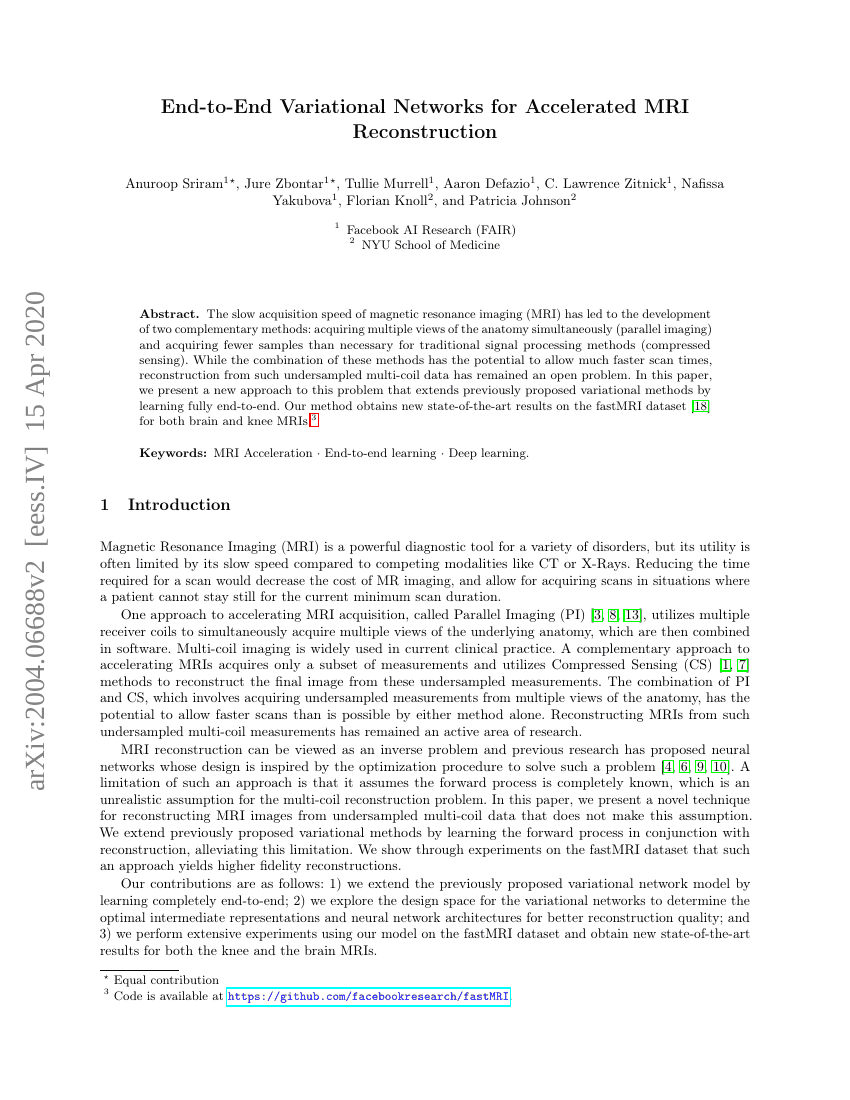Anuroop SriramJure ZbontarTullie MurrellAaron DefazioC. Lawrence ZitnickNafissa YakubovaFlorian KnollPatricia Johnson

摘要
磁共振成像(MRI)的采集速度较慢,促使人们发展出两种互补的技术:一是同时获取解剖结构的多个视角(并行成像),二是采集少于传统信号处理方法所需数量的样本(压缩感知)。尽管这两种方法的结合有望显著缩短扫描时间,但如何从这种欠采样的多线圈数据中进行重建,长期以来仍是一个未解难题。本文提出了一种新方法,通过端到端学习的方式扩展了以往的变分法框架。该方法在fastMRI数据集上对脑部和膝关节MRI均取得了当前最先进的重建效果。
代码仓库
facebookresearch/fastMRI
官方
pytorch
GitHub 中提及
z-fabian/MRAugment
pytorch
GitHub 中提及
MathFLDS/MRAugment
pytorch
GitHub 中提及
基准测试
| 基准 | 方法 | 指标 |
|---|---|---|
| mri-reconstruction-on-fastmri-brain-4x | End-to-end variational network | PSNR: 41 SSIM: 0.959 |
| mri-reconstruction-on-fastmri-brain-8x | End-to-end variational network | PSNR: 38 SSIM: 0.943 |
| mri-reconstruction-on-fastmri-knee-4x | End-to-end variational network | PSNR: 40 SSIM: 0.930 |
| mri-reconstruction-on-fastmri-knee-8x | End-to-end variational network | PSNR: 37 SSIM: 0.890 |
| mri-reconstruction-on-fastmri-knee-val-8x | E2E-VarNet (train+val) | NMSE: 0.0087 PSNR: 37.30 Params (M): 30 SSIM: 0.8936 |